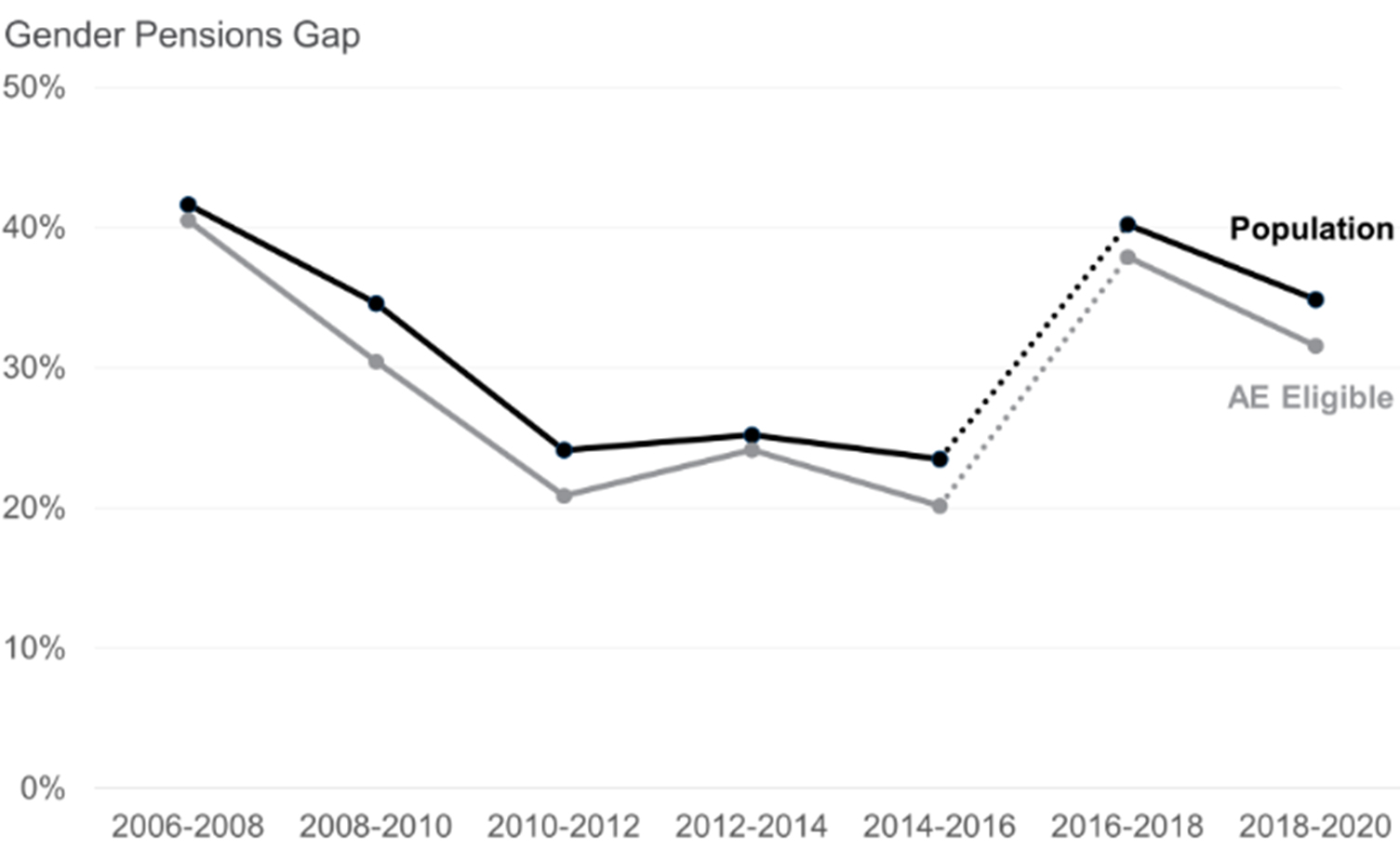June 2023 saw the welcome publication of the first official data on the gender pension gap1. However, the official data has important omissions and needs careful interpretation if the right conclusions are to be drawn.
First, the new DWP statistics exclude state pensions.
Historically, state pensions have been a source of inequality, with a system designed around a male breadwinner model. Even today there remains a gap of over £25 per week between men and women who retired under this old system. However, the new state pension has significantly reduced this gap. Data obtained by LCP under the FOI Act data shows that in 2022/23, the state pension difference was just £4 per week between newly retired men and women, whilst full equality in state pensions is predicted for the 2030s.
Ignoring state pensions when discussing the gender pension gap obscures a vital part of the picture. This is particularly important as the typical newly retired woman derives more than half of her total income in retirement from that source.
Ski slope of doom
There has also been a decline in private sector DB pensions inequality. This is largely due to a sharp decrease in men’s DB pensions, a trend we at LCP have termed ‘the ski slope of doom’. We project that the average male private sector DB pension at retirement will drop by three quarters by the late 2030s in real terms. This will cause a significant decrease in the gender pension gap, albeit not exactly a policy success.
Public sector DB pensions paint a different picture. Nearly all future DB pensions will be from the public sector, with high female representation. For instance, of the 1.7m active NHS pension scheme members in March 2021, 1.3m were women, and of the 0.7m active Teachers Pension Scheme members in March 2020, 0.5m were women. Despite male over-representation in senior positions, maintaining DB pensions in the public sector could help narrow the overall gender pension gap, though entrenching a different sort of inequality, namely between public and private sector workers.
Looking at the new DWP figures, which cover all non-state pensions, the chart shows how the gender pension gap has changed in recent years. Note that these figures are only for those up to five years beyond ‘Normal Minimum Pension Age’, which means ages 50-54 in the data before 2010, and ages 55-59 thereafter.
The gender pensions gap in private pensions 2006/08 to 2018/20

The chart shows that the gender pension gap nearly halved from 2006-08 to 2010-12, was then relatively stable for the next four years after which it increased somewhat.
The initial decrease could be due to a range of factors. One could be that a steadily higher percentage of women in their fifties has had a career and chance to build up a decent workplace pension. Another could be a changing balance between public and private sector coverage, with the public sector being expanded in the early 2000s whilst private sector pension membership continued to fall.
The subsequent rise in inequality from 2014 onwards is perhaps surprising given Automatic Enrolment brought millions of men and women into pension saving for the first time.
However, this data only includes those who have some pension wealth. Some lower paid women (in particular) who had no pension at all prior to the introduction of AE would start to be included in the figures as soon as they were enrolled, even though their pension pot could be tiny. This could lower the median pension wealth of women more than for men, thereby increasing the gender pension gap.
What do these findings suggest?
Firstly, not all is bleak concerning gender pension inequality. Historic state pension inequality is giving way to more balanced outcomes under the new state pension.
Secondly, the decline of private sector Defined Benefit (DB) pensions primarily affects men, so we may see less pension inequality due to private sector DB disparities.
However, the growth of DC pensions could replicate previous inequalities seen in the DB landscape. Women generally earn less, have lower DC contribution rates, and fewer years in paid employment over their lifetime. Unless these disparities lessen, the gender pension gap will persist.
Laura Myers and Steve Webb are partners at consultants LCP.






















